

Thomas Crowther
Thomas Crowther is a researcher and ecosystem ecologist who is responsible for the conceptual overview of Crowther Lab.
Thomas Crowther: British Scientist, Ecologist. Home - Crowtherlab. Biodiversity: The lost decade – The Agenda in full - CGTN. This year the United Nations released a devastating report revealing how the world failed to meet a single one of the 20 Aichi biodiversity targets agreed in Japan in 2010.

Some of these goals included harvesting fish sustainably, improving the conservation status of endangered species and minimizing the impact on coral reefs. UN's Trillion Tree Campaign, the low-tech solution to climate change - CGTN. Last year, a Swiss laboratory published a report revealing that there are 1.7 billion hectares of unused land where over a trillion new trees could have room to grow.
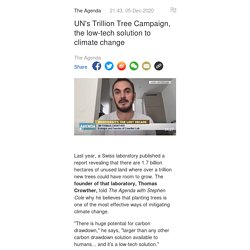
The founder of that laboratory, Thomas Crowther, told The Agenda with Stephen Cole why he believes that planting trees is one of the most effective ways of mitigating climate change. "There is huge potential for carbon drawdown," he says, "larger than any other carbon drawdown solution available to humans... and it's a low-tech solution. " Climate Change Leads to Earlier Onset of Autumn, Limits Trees’ Ability to Store Carbon: Study. The belief that trees could limit global warming and climate change due to prolonged growing seasons has taken a hit with a new study showing that tree leaves are changing their colour earlier than normal.
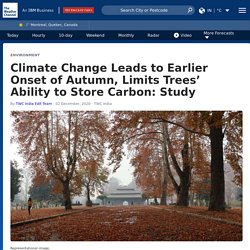
The new findings overturn the belief that warmer temperatures delay the shedding of leaves that marks the beginning of autumn and suggest earlier shedding of leaves in temperate countries. Changes in leaves colour and their shedding was long-known to depend on changes in temperature and length of the day. Previous research had shown that global warming leads to a prolonged spring as the number of colder days reduce. Climate change has autumn leaves falling sooner, researchers say. TORONTO -- A new study based on European forest trees indicates that climate change is leading to longer growing seasons and causing leaves to fall earlier in the year.
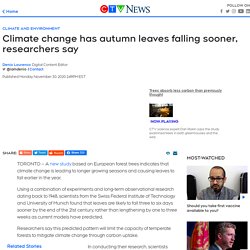
Using a combination of experiments and long-term observational research dating back to 1948, scientists from the Swiss Federal Institute of Technology and University of Munich found that leaves are likely to fall three to six days sooner by the end of the 21st century, rather than lengthening by one to three weeks as current models have predicted. Researchers say this predicted pattern will limit the capacity of temperate forests to mitigate climate change through carbon uptake. In conducting their research, scientists obtained more than 430,000 phenological observations from 3,855 sites across Central Europe from 1948 to 2015. Climate change is making leaves fall sooner and store less carbon. Here's why. Every autumn, the leaves on the trees first change their colors before eventually falling off, creating a colorful seasonal display.

But even this spectacular setting is now being affected by climate change, the authors of a new study report. The higher temperatures appear to be delaying autumn and making the trees drop their leaves earlier and store less carbon. Autumn is also known as “fall” because, well, it’s the season when leaves fall down. Climate crisis making autumn leaves fall earlier, study finds. Global heating appears to be making trees drop their leaves earlier, according to new research, confounding the idea that warmer temperatures delay the onset of autumn.

The finding is important because trees draw huge amounts of carbon dioxide from the air and therefore play a key role in managing the climate. One trillion trees - uniting the world to save forests and climate. Halting deforestation is essential to avoiding the worst effects of global climate change.
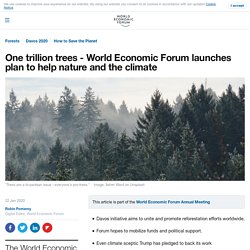
The destruction of forests creates almost as much greenhouse gas emissions as global road travel, and yet it continues at an alarming rate. In 2012, we brought together more than 150 partners working in Latin America, West Africa, Central Africa and South-East Asia – to establish the Tropical Forest Alliance 2020: a global public-private partnership to facilitate investment in systemic change. The Alliance, made up of businesses, governments, civil society, indigenous people, communities and international organizations, helps producers, traders and buyers of commodities often blamed for causing deforestation to achieve deforestation-free supply chains. The Commodities and Forests Agenda 2020, summarizes the areas in which the most urgent action is needed to eliminate deforestation from global agricultural supply chains. Tree restoration potential, Q&A - Crowtherlab.
Planting a trillion trees really can help us fight climate change. By Fred Pearce Daniel Auf der Mauer/i3 Photo.
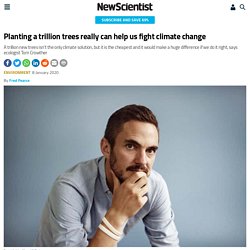
11 Inspiring Examples to Give You Hope That the World’s Forests can be Regenerated – Abundant Edge. After 11 interviews with experts on native reforestation, holistic orchard management, water retention landscapes, perennial crop agriculture and more, I learned a lot of new things about the state of the world’s forests and the tools and knowledge we have to regenerate them.
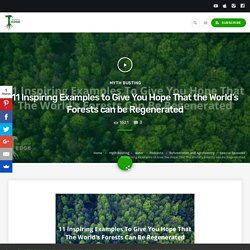
In this special episode wrapping up the series on reforestation and agroforestry I’ll break down some of the information and statistics that will help you understand the major role that forests play in maintaining a healthy climactic balance on earth. I’ll also break down how both past and current practices have put forests at risk all over the world and how even many well intentioned projects are causing unintended damage. If you’d prefer to read all this information or even print it out, you can find the article here Resources:
Planting a trillion trees? Ambitious, but doable - ETH Ambassadors. Four Principles of Forest Restoration. A Trillion Trees: How One Idea Triumphed Over Trump’s Climate Denialism. Mr.
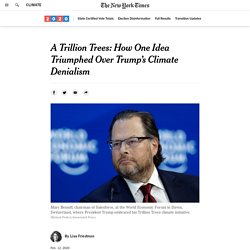
Benioff, in a telephone interview, said he decided to take a chance anyway. Mr. Gore had bent his ear last summer about emerging research into reforestation and climate change. After discussions with scientists at the Benioff Ocean Initiative, a program at the University of California, Santa Barbara, he was hooked. “I realized this looks like a practical, actionable thing,” he said. He discussed it with other scientists, such as Jane Goodall, the English primatologist, as well as financiers, hoping to rally governments and companies around the initiative at the World Economic Forum.
Mr. “People think something that’s actually not true, which is that they’re not interested in hearing new ideas or hearing science,” Mr. “Trees are the ultimate bipartisan issue,” he added. Mr. Can We Plant Enough Trees? As temperatures rise and wildfires rage from Canada to Australia, forests have become a symbol of danger in a warming world. They may also be one of our best hopes for capturing and storing the unsustainable levels of carbon dioxide that humans have released into the atmosphere.
“If we can do it right,” says British ecologist Thomas Crowther, “the conservation and restoration of forests can potentially buy us some time as we try to decarbonize our economies.” A recent study that Crowther co-authored in Science points to nearly a billion hectares of non-urban, nonagricultural land on Earth that could be reforested — ultimately capturing as much as 200 gigatons of atmospheric carbon. To date, human industrial activity has added 300 gigatons of excess carbon to the atmosphere. Breathing Life Back into Our Planet - An Interview with Professor Thomas Crowther - Youth Time Magazine.
Professor Thomas Crowther, first of all, tell us about your bottom-up approach towards the ecosystem. Backing the trillion tree campaign to combat climate crisis. The recent explosion of interest in tree restoration has transformed the climate change conversation. Although the trillion tree campaign – 1T.org – is now in the realm of politicians and influencers (Greta Thunberg: Davos leaders ignored climate activists’ demands, 24 January), it emerged from scientific literature. But what exactly did the science show? We estimated that there is up to 0.9bn hectares of degraded land that might support a trillion trees outside of existing forest, urban or agricultural land.
Although the exact carbon storage potential is debated, scientists agree that ecosystem restoration is a powerful tool for carbon drawdown. Press Conference: One Trillion Trees. We Stand Together With Nature. Amidst the tragedy of the COVID-19… Thomas Crowther: The global movement to restore nature's biodiversity.